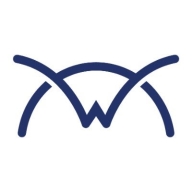


Microsoft Remote Desktop Services and ScreenConnect compete in the remote access solutions category. Microsoft Remote Desktop Services has an upper hand in reliability and ease of use, while ScreenConnect excels in cost-effectiveness and connectivity.
Features: Microsoft Remote Desktop Services integrates seamlessly with Microsoft systems, ensuring security and scalability. It supports server-based applications with ease and provides a smooth experience with Microsoft tools. ScreenConnect stands out with its straightforward deployment, robust unattended access, and persistent connectivity, essential for consistent remote management and quick file transfers.
Room for Improvement: Microsoft Remote Desktop Services users highlight issues with slow network performance, integration with non-Windows platforms, and security protocols. They seek enhancements in remote functionalities and broader compatibility. ScreenConnect users desire a more streamlined setup process, improved cross-device compatibility, and better documentation to enrich the overall experience.
Ease of Deployment and Customer Service: Microsoft Remote Desktop Services offers straightforward configuration, often manageable without technical support, though response times can be inconsistent. ScreenConnect facilitates deployment with minimal external help, providing a positive support experience focused on quick setup and accessibility via online resources.
Pricing and ROI: Microsoft Remote Desktop Services includes free versions bundled with Windows, but costs can rise for extensive use. It's valuable for enterprises utilizing Windows ecosystems. ScreenConnect's affordable pricing and simple licensing enhance ROI for smaller teams, offering a competitive model that helps manage costs effectively.
Everything we've gained from it makes my job easier day after day, and I see value in it as an engineer.
Microsoft Intune not only saves costs by reducing the number of personnel needed but also offers a comprehensive solution for managing laptops, applications, security, individual access, and enrollment.
Importantly, when someone leaves the company, it helps protect document access on their devices.
When a support ticket is submitted, it directly reaches someone with Intune support expertise.
When I contacted Microsoft, they had the same expertise, if not more, which is phenomenal because I felt heard and my problem was solved.
Sometimes, the support provided is excellent, and the representative is knowledgeable, while other times, the service needs improvement.
The scalability of Microsoft Intune is ten out of ten.
Ideally, we want to automatically segregate devices based on user properties like primary use, but currently, dynamic groups seem limited to device properties.
It supports organizations with 200 endpoints and those with more than 15,000 endpoints.
My impression is that most of the solutions, especially today, make sense for large corporations with 2000 seats or more.
We have not experienced downtime, bugs, or glitches.
It appears Microsoft Intune undergoes changes without informing customers.
Microsoft Intune has been very stable.
Features like unlocking devices sometimes fail, and the support offered for other operating systems is insufficient.
There are communication issues, so you might start working with a feature without knowing if it will be deprecated six months from now.
Many third-party companies offer single-pane-of-glass reporting that shows you what your update environment looks like, how your patch is doing, application status, etc., but Intune's reporting is not intuitive.
It should be easier to create a template and duplicate users.
The only problem I see is that when I am connected, there is a certain lag because of the network.
Introductory professional services, like a fast-track service, were included with our E5 membership, and there have been no additional costs.
The Intune suite and add-ons, such as batch management and remote help, are costly.
It costs approximately forty euros per user per month.
These licenses are not cheap, as they add up in cost.
Intune excels in configuration and compliance management for Windows 10, ensuring devices receive timely updates and adhere to organizational standards.
Dynamic groups allow us to set conditions for automatic membership, eliminating the need for user intervention or manual review and ensuring a seamless workflow.
Windows Autopatch is the most valuable because it removes the burden of patch management.
The main benefits that Microsoft Remote Desktop Services provide to me include streamlining my working process, ensuring security, and offering flexibility to connect to virtual desktops and apps from multiple devices.
A valuable feature of Microsoft Remote Desktop Services is its native integration with Microsoft platforms.
| Product | Market Share (%) |
|---|---|
| Microsoft Intune | 9.6% |
| Microsoft Remote Desktop Services | 9.4% |
| ScreenConnect | 1.8% |
| Other | 79.2% |



| Company Size | Count |
|---|---|
| Small Business | 116 |
| Midsize Enterprise | 46 |
| Large Enterprise | 152 |
| Company Size | Count |
|---|---|
| Small Business | 39 |
| Midsize Enterprise | 16 |
| Large Enterprise | 30 |
| Company Size | Count |
|---|---|
| Small Business | 15 |
| Midsize Enterprise | 6 |
| Large Enterprise | 7 |
Microsoft Intune provides centralized management of mobile devices and applications, ensuring security, compliance, and productivity through integration with Microsoft services like Microsoft 365 and Azure Active Directory.
Organizations use Intune for managing mobile devices and applications, enhancing security and compliance across platforms. With features like single sign-on, conditional access, and zero-touch deployment via Autopilot, it facilitates efficient operations. Intune's scalability, easy enrollment, and capabilities such as remote wipe support diverse device management, offering robust data protection and efficient operation. Despite its features, improvement areas include reporting, compatibility with non-Microsoft devices, and better support for macOS and Linux devices.
What are the key features of Microsoft Intune?
What benefits should users look for in reviews?
In industries such as finance, healthcare, and education, Microsoft Intune is implemented to ensure secure and compliant device management. Companies leverage its capabilities to deploy security policies and manage both corporate-owned and BYOD environments, facilitating a unified approach to data protection and compliance.
Microsoft Remote Desktop Services is a highly regarded remote access tool in addition to being a top-ranked Virtual Desktop Infrastructure (VDI) solution in the marketplace today.
Microsoft Remote Desktop Services (RDS) is a suite of valuable elements of the Windows operating system (OS) that serve specific desired objectives. Microsoft RDS integrates various features that allow approved users to gain access to graphical desktops and Windows applications remotely. Approved users are able to deploy applications or even a complete desktop without having to install anything on their devices. Everything remains in the cloud. This ensures that there are never any compatibility issues and keeps the organization's original network secure at all times. Administrators are also able to ensure that data cannot be stored in any unapproved location, such as the local device, unapproved drives, or any other location.
Microsoft RDS makes it easy for business organizations to access Windows Desktops and other Windows applications remotely to ensure today’s busy enterprise organizations are able to maintain the highest levels of productivity at all times. There are two basic ways organizations can effectively utilize RDS.
Microsoft Remote Desktop Services Benefits
Microsoft Remote Desktop Services has many benefits. Some of its most valuable benefits include:
Microsoft Remote Desktop Services makes it easy for busy enterprise organizations to stay productive and remain competitive in today’s aggressive marketplace. An organization's end-users can be given access to their own specific desktops from any location, anytime, using any approved device. Additionally, users can access Microsoft applications without having an effect on their device's resource capacity or performance.
Reviews from Real Users
“What I found most valuable in Microsoft Remote Desktop Services is accessibility because the solution lets you take control of your computer remotely, and that's a good feature.” Pascal B., IT consultant at Secoptrial
“The most valuable features of Microsoft Remote Desktop Services are unification, central management, and accessibility.” Jan S. Solution Architect at a tech services company
“The most valuable features are that it is fast and cost-effective. I am not aware of a replacement currently on the market.” Ramon H. Director at Empaco
ScreenConnect offers seamless connections to desktops, mobiles, and other devices with top-tier security features. Empowering businesses through customizable branding, it facilitates real-time problem-solving and adapts to specific access needs with granular control.
ScreenConnect stands out by providing robust remote access solutions, enhanced with security like AES-256 encryption and two-factor authentication. Users appreciate the customization options, enabling them to white-label software to reflect their brand. The Support Premium edition includes ScreenConnect View, a live streaming feature assisting with real-time hardware troubleshooting through mobile cameras. It integrates smoothly with existing systems, offering unattended access, automatic reconnection, and session recording. However, there's room for improvement in user configuration options, file transfer capabilities, and security recognition. Overall, it supports a wide range of devices and browsers, ensuring session continuity even through reboots, making the setup process straightforward.
What are the key features of ScreenConnect?Businesses apply ScreenConnect for remote support, assisting with IT tasks and troubleshooting, often using unattended access functionalities. It's popular among teams of various sizes, aiding companies in managed services and client interactions. The tool's effectiveness makes it suitable for on-site-like remote assistance, though improvements in dual monitor management and domain integration are desired. User feedback highlights the necessity for enhanced onboarding, more intuitive configuration, and advanced reporting features, making it a versatile choice for remote support across industries.
We monitor all Remote Access reviews to prevent fraudulent reviews and keep review quality high. We do not post reviews by company employees or direct competitors. We validate each review for authenticity via cross-reference with LinkedIn, and personal follow-up with the reviewer when necessary.